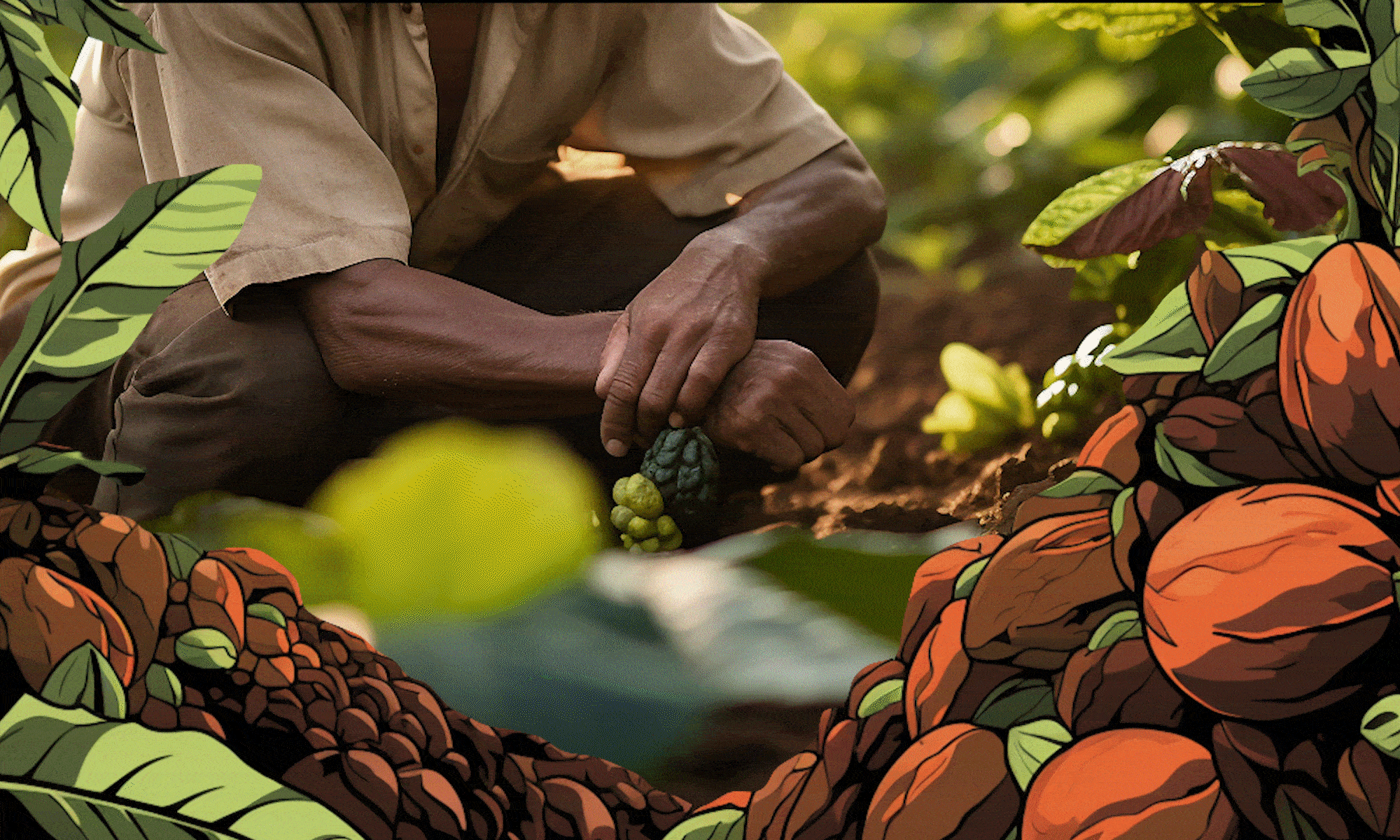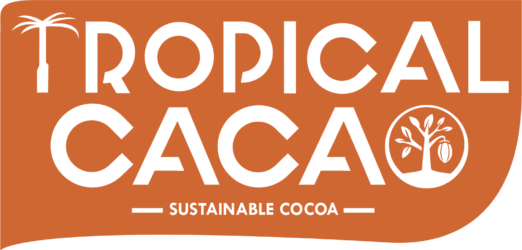Cacao and Mental Health: How Chocolate Can Boost Your Mood 🧠😊
For centuries, chocolate has been treasured not just for its indulgent taste but also for its mood-enhancing properties. Modern science now confirms what ancient civilizations intuited: cacao contains compounds that can positively impact our mental wellbeing. This comprehensive guide explores the fascinating connection between cacao and mood, backed by research and practical applications.
Table of Contents
The Science Behind Chocolate’s Mood-Boosting Power
Cacao and Serotonin: The Happiness Connection
How Dark Chocolate Helps Manage Stress
The Optimal “Dose” of Chocolate for Mental Health
Cacao vs. Commercial Chocolate: What Makes the Difference
Recipes for Mood-Enhancing Cacao Drinks
Beyond Mood: Cacao’s Other Brain Benefits
FAQ: Common Questions About Cacao and Mental Health
The Science Behind Chocolate’s Mood-Boosting Power
The relationship between cacao and our mood isn’t just psychological—it’s biochemical. Real cacao contains several compounds that interact with our brain chemistry in remarkable ways.
Key Mood-Enhancing Compounds in Cacao
Compound How It Affects Mood Found In Theobromine Provides gentle, sustained energy without caffeine crashes Highest in raw cacao nibs and dark chocolate (85%+) Phenylethylamine (PEA) Triggers release of endorphins and dopamine Most concentrated in minimally processed cacao Anandamide Known as the “bliss molecule,” creates feelings of euphoria Present in raw cacao, diminishes with processing Tryptophan Precursor to serotonin production Found in all forms of cacao Flavanols Improve blood flow to the brain and reduce inflammation Highest in minimally processed, dark chocolate
What Research Tells Us
The evidence connecting cacao consumption to improved mood is substantial:
- A 2019 study published in Depression & Anxiety found that adults consuming dark chocolate (70%+ cacao) reported 70% fewer depressive symptoms compared to those who ate little or no chocolate.
- Research from the Nestlé Research Center showed that consuming 40g of dark chocolate daily for two weeks reduced stress hormones in highly stressed individuals.
- A 2020 systematic review in Nutritional Neuroscience examined 15 studies and concluded that flavanol-rich cacao products have “significant positive effects on mood.”
Cacao and Serotonin: The Happiness Connection
Serotonin—often called the “happiness neurotransmitter”—plays a crucial role in regulating mood, sleep, and appetite. Cacao influences our serotonin levels through multiple pathways.
How Cacao Boosts Serotonin
- Tryptophan Conversion: Cacao contains tryptophan, an essential amino acid that serves as a precursor to serotonin. When we consume cacao, this tryptophan can be converted into 5-HTP and then into serotonin.
- Serotonin Release: Compounds in cacao may help trigger the release of stored serotonin, creating an immediate mood lift.
- MAO Inhibition: Cacao contains compounds that act as mild monoamine oxidase inhibitors (MAOIs), which slow the breakdown of serotonin in the brain, allowing it to remain active longer.
The Mood Cycle of Chocolate Consumption
The mood effects of cacao typically follow this pattern:
- Immediate Response (5-30 minutes): The sensory pleasure of taste combined with quick-acting compounds like theobromine and PEA creates the initial “chocolate high.”
- Sustained Effect (1-3 hours): Flavanols improve blood flow to the brain while anandamide and serotonin-boosting compounds maintain elevated mood.
- Long-term Benefits (with regular consumption): Daily moderate intake of high-quality cacao may help regulate mood systems and reduce chronic stress.
How Dark Chocolate Helps Manage Stress
Beyond its direct mood-enhancing effects, cacao contains compounds that specifically target our stress response systems, helping to break the cycle of chronic stress that contributes to depression and anxiety.
Cortisol Reduction
Cortisol, often called the “stress hormone,” is essential for survival but problematic when chronically elevated. Research has shown that regular consumption of dark chocolate can lead to measurable reductions in cortisol levels:
- A 2014 study in the Journal of the American College of Cardiology found that participants who consumed 25g of 72% dark chocolate daily for 30 days showed significantly lower cortisol levels during stress tests compared to a control group.
The Relaxation Response
The ritual of mindfully enjoying chocolate can trigger the parasympathetic nervous system—our “rest and digest” mode:
- Sensory Engagement: The full sensory experience of good chocolate—aroma, texture, and taste—can anchor us in the present moment, similar to mindfulness practices.
- Theobromine Effect: Unlike caffeine’s jittery energy, theobromine provides a gentler, more balanced stimulation that many describe as a “calm alertness.”
- Pleasure Pathway Activation: The simple act of experiencing pleasure activates reward centers that counteract stress circuits in the brain.
The Optimal “Dose” of Chocolate for Mental Health
When it comes to chocolate’s mood benefits, quality and quantity both matter. Here’s how to find the sweet spot:
Quality Considerations
For maximum mental health benefits, choose chocolate with:
- At least 70% cacao content
- Minimal added sugar
- Few or no fillers, artificial ingredients, or excess fats
- Ethical sourcing (which eliminates the “guilt factor”)
Recommended Daily Amount
Research suggests the following guidelines: Mental Health Goal Recommended Daily Intake Best Type General mood maintenance 1-2 squares (10-20g) 70-85% dark chocolate Acute stress relief 20-30g 85%+ dark chocolate or raw cacao Anxiety management 10g twice daily 70%+ dark chocolate Depression support* 30-40g >85% dark chocolate or raw cacao nibs
*Note: While cacao may help support mood, it should not replace professional treatment for clinical depression.
Timing Considerations
The timing of cacao consumption can optimize its mental health benefits:
- Morning: A small amount can set a positive tone without disrupting sleep
- Mid-afternoon slump: Can provide natural energy without caffeine’s side effects
- Before stressful events: 20-30 minutes before can help manage stress response
- Evening: Small amounts of high-percentage dark chocolate typically don’t disrupt sleep
Cacao vs. Commercial Chocolate: What Makes the Difference
Not all chocolate products deliver the mental health benefits discussed in this article. Understanding the spectrum of cacao products helps you choose options with genuine mood-enhancing potential.
The Cacao-to-Chocolate Spectrum
Product Processing Level Mood-Boosting Potential Sugar Content Best Uses Raw cacao beans/nibs Minimal Highest None Adding to smoothies, oatmeal Cacao powder (non-alkalized) Low Very high None Hot drinks, baking, smoothies Dark chocolate (85%+) Moderate High Very low Direct consumption Dark chocolate (70-84%) Moderate-high Moderate-high Low Direct consumption, cooking Milk chocolate High Low High Occasional treats only White chocolate Complete (no cacao solids) None Very high No mood benefits
Processing Effects on Mood Compounds
The way cacao is processed significantly impacts its mood-enhancing properties:
- Alkalization (Dutch processing) reduces flavanol content by up to 60%
- Roasting decreases some compounds but can make others more bioavailable
- Conching (extended grinding) reduces some volatile compounds
- Adding sugar and milk dilutes beneficial compounds and may counteract some benefits
Recipes for Mood-Enhancing Cacao Drinks
Cacao beverages have been used traditionally for their mood-altering properties across cultures, from Mayan ceremonial drinks to modern wellness elixirs. These recipes maximize the mental health benefits of cacao.
Classic Ceremonial Cacao
A traditional preparation that preserves cacao’s full spectrum of mood-enhancing compounds.
Ingredients:
- 2 tablespoons ceremonial-grade cacao paste or 3 tablespoons raw cacao powder
- 1 cup hot (not boiling) water
- Small pinch of cayenne pepper (optional)
- 1 teaspoon raw honey or maple syrup (optional)
- Tiny pinch of sea salt
Instructions:
- Gently heat water to about 140°F (60°C)—hot but not boiling.
- If using cacao paste, chop finely.
- Place cacao in a blender with hot water and salt.
- Blend for 30-60 seconds until frothy.
- Add sweetener and cayenne if desired, blend briefly.
- Pour into a mug and sip slowly, focusing on the experience.
Mood Benefits: This preparation maximizes theobromine and phenylethylamine content while the mindful consumption enhances the relaxation response.
Stress-Relief Cacao Elixir
Designed specifically to counteract acute stress with adaptogens that complement cacao’s effects.
Ingredients:
- 1 tablespoon raw cacao powder
- 1 cup plant-based milk
- ¼ teaspoon ashwagandha powder
- ¼ teaspoon cinnamon
- Small pinch of nutmeg
- 1 teaspoon MCT oil or coconut oil
- 1 teaspoon honey or monk fruit sweetener
Instructions:
- Warm milk gently in a small saucepan (do not boil).
- Whisk in cacao powder until smooth.
- Add remaining ingredients and whisk until combined.
- Pour into a mug and consume when feeling stressed.
Mood Benefits: Ashwagandha enhances cacao’s cortisol-lowering properties, while cinnamon helps stabilize blood sugar (which impacts mood).
Bedtime Chocolate Calm
A gentle preparation that provides mood benefits without disrupting sleep.
Ingredients:
- 1 teaspoon raw cacao powder
- 1 cup warm almond or oat milk
- ⅛ teaspoon vanilla extract
- ¼ teaspoon magnesium glycinate powder (optional)
- 1 teaspoon honey
- Pinch of sea salt
Instructions:
- Warm milk gently.
- Whisk in all ingredients until fully combined.
- Drink 30-60 minutes before bedtime.
Mood Benefits: The lower dose of cacao provides gentle mood support without stimulation, while magnesium complements cacao’s relaxation effects.
Beyond Mood: Cacao’s Other Brain Benefits
While mood enhancement might be cacao’s most immediately noticeable mental health benefit, research reveals several other ways it supports brain function:
Cognitive Performance
The flavanols in cacao improve cerebral blood flow, potentially enhancing cognitive function:
- A 2017 study in Frontiers in Nutrition found that cacao flavanol consumption was associated with improved performance on cognitively demanding tasks.
- Research from Columbia University showed that high-flavanol cocoa improved memory function in older adults.
Neuroprotective Properties
Compounds in cacao may help protect brain cells from damage:
- The antioxidants in cacao help neutralize free radicals that can damage neurons.
- Flavanols help maintain the integrity of the blood-brain barrier.
- Some studies suggest cacao compounds may reduce the risk of neurodegenerative diseases.
Long-term Mental Health Support
Regular consumption of high-quality cacao may provide cumulative mental health benefits:
- Improved insulin sensitivity (which affects brain energy)
- Reduced neuroinflammation (associated with depression)
- Enhanced BDNF (Brain-Derived Neurotrophic Factor) production, which supports neuroplasticity
FAQ: Common Questions About Cacao and Mental Health
Will any chocolate improve my mood, or only dark chocolate?
While all chocolate may provide a temporary mood boost due to sugar and sensory pleasure, only chocolates with high cacao content (70%+) contain sufficient beneficial compounds to provide the neurochemical benefits discussed in this article. Milk chocolate and white chocolate contain minimal amounts of these active compounds.
Is cacao addictive since it affects brain chemistry?
Despite popular belief, cacao is not physiologically addictive. The desire for chocolate is more accurately described as a craving. These cravings often relate to the sensory experience, cultural associations, and sugar content rather than an addiction to cacao compounds. True addiction involves tolerance, withdrawal, and continued use despite negative consequences—criteria that cacao consumption doesn’t typically meet.
Can cacao help with clinical depression?
While research shows cacao may help with mood regulation, it should never replace professional treatment for clinical depression. Some studies suggest high-flavanol cacao might serve as a complementary approach alongside conventional treatment, but always consult a healthcare provider before using any food as part of a mental health strategy.
Does cacao interact with antidepressant medications?
Cacao contains compounds that may interact with certain medications, particularly MAOIs (Monoamine Oxidase Inhibitors). The tyramine and phenylethylamine in cacao could potentially cause problems when combined with these medications. Always consult your healthcare provider about potential food-drug interactions if you’re taking antidepressants or other psychiatric medications.
How quickly will I notice mood effects from cacao?
Most people notice mild effects within 30-60 minutes of consuming high-quality cacao products. The full spectrum of benefits, particularly stress reduction and improved cognitive function, may develop more fully with regular consumption over 2-3 weeks.
Is raw cacao better for mental health than roasted?
Raw cacao preserves more of certain compounds like antioxidants and phenylethylamine, potentially offering stronger immediate mood effects. However, roasting makes other compounds more bioavailable. Both forms offer mental health benefits, though raw preparations may have a more pronounced immediate impact on mood.
While cacao offers promising mental health benefits, it works best as part of a holistic approach to wellbeing that includes proper nutrition, regular exercise, adequate sleep, stress management, and social connection. For persistent mood concerns, always consult with healthcare professionals.

